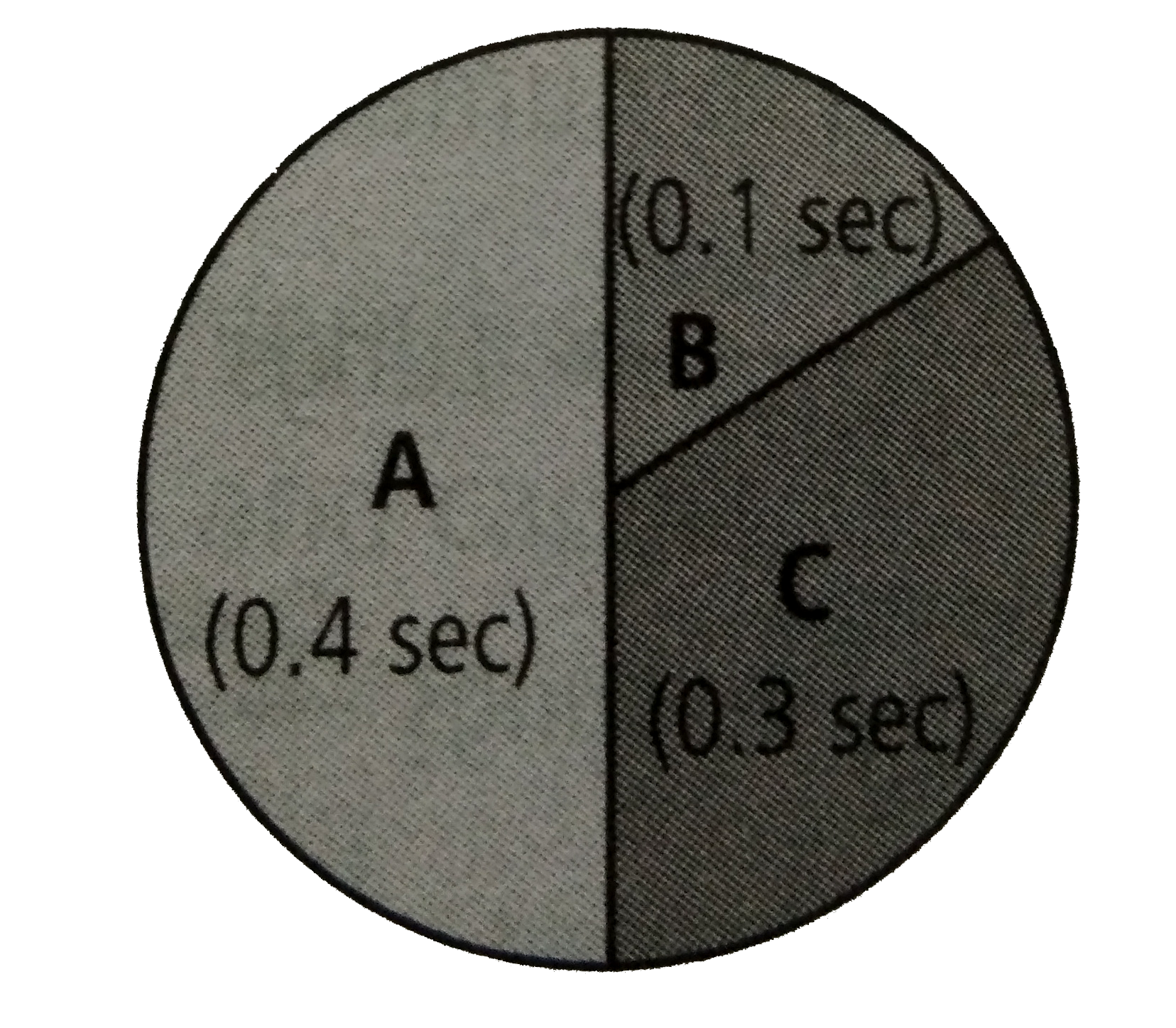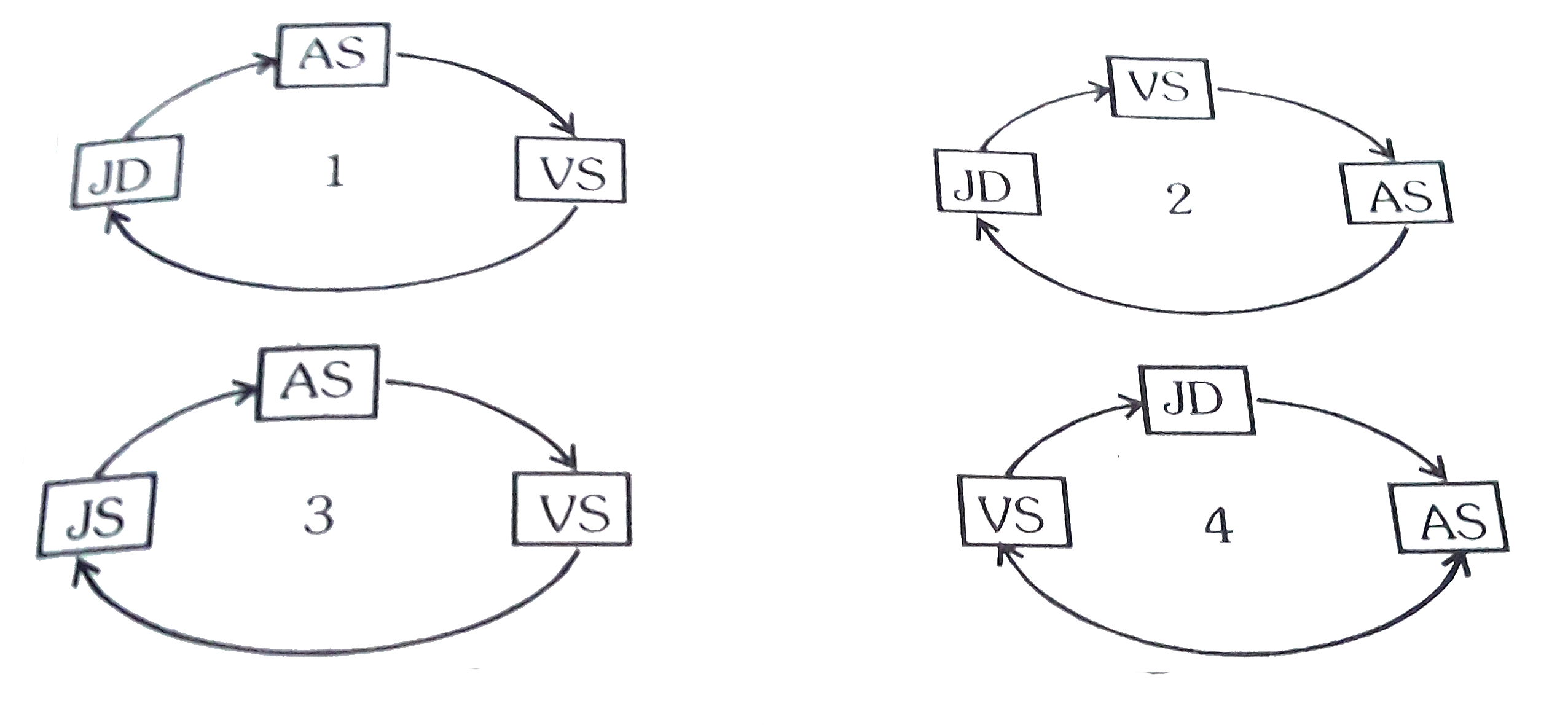What is the total time taken to form one cardiac cycle?
To determine the total time taken to form one cardiac cycle, we can follow these steps:
1. Understand the Cardiac Cycle:
- The cardiac cycle consists of two main phases: contraction (systole) and relaxation (diastole). Together, these phases make up one complete cycle of the heart.
2. Determine the Heart Rate:
- The average heart rate is typically around 72 beats per minute in a resting adult.
3. Convert Heart Rate to Cardiac Cycle Duration:
- Since the heart beats 72 times in one minute, we can calculate the duration of one cardiac cycle by dividing the total time in one minute (60 seconds) by the number of beats per minute.
- Formula:
Time for one cardiac cycle=60 secondsHeart Rate (beats per minute)
- Substituting the heart rate:
Time for one cardiac cycle=60 seconds72 beats per minute≈0.833 seconds
4. Final Result:
- The total time taken to form one cardiac cycle is approximately 0.8 seconds.
Conclusion:
The total time taken to form one cardiac cycle is approximately 0.8 seconds.
---
- The cardiac cycle consists of two main phases: contraction (systole) and relaxation (diastole). Together, these phases make up one complete cycle of the heart.
- The average heart rate is typically around 72 beats per minute in a resting adult.
- Since the heart beats 72 times in one minute, we can calculate the duration of one cardiac cycle by dividing the total time in one minute (60 seconds) by the number of beats per minute.
- Formula:
Time for one cardiac cycle=60 secondsHeart Rate (beats per minute)
- Substituting the heart rate:
Time for one cardiac cycle=60 seconds72 beats per minute≈0.833 seconds
- The total time taken to form one cardiac cycle is approximately 0.8 seconds.
The total time taken to form one cardiac cycle is approximately 0.8 seconds.
Topper's Solved these Questions
- BOOK - ICSECHAPTER - BODY FLUIDS AND CIRCULATIONEXERCISE - REVIEW QUESTIONS( VIII. SHORT ANSWER TYPE QUESTIONS )6videos
BODY FLUIDS AND CIRCULATION
- BOOK - ICSECHAPTER - BODY FLUIDS AND CIRCULATIONEXERCISE - REVIEW QUESTIONS( IX . LONG ANSWER TYPE QUESTIONS )12videos
BODY FLUIDS AND CIRCULATION
- BOOK - ICSECHAPTER - BODY FLUIDS AND CIRCULATIONEXERCISE - REVIEW QUESTIONS( VI. DIFFERENTIATE BETWEEN THE FOLLOWING )13videos
BODY FLUIDS AND CIRCULATION
- BOOK - ICSECHAPTER - BIOMOLECULESEXERCISE - REVIEW QUESTIONS (LONG ANSWER TYPE QUESTIONS)9videos
BIOMOLECULES
- BOOK - ICSECHAPTER - BREATHING AND EXCHANGE OF GASESEXERCISE - REVIEW QUESTIONS (LONG ANSWER TYPE QUESTIONS)8videos
BREATHING AND EXCHANGE OF GASES
Similar Questions
Knowledge Check
- Question 1 - Select One
The figure represents total period of one cardiac cycle i.e., 0.8 sec and A, B and C represent its stages. Identify A, B, C and select the correct statement regarding them
 ADuring A, tricuspid and bicuspid valves open and blood flows from atria into the ventriclesBDuring B, bicuspid and tricuspid valves close producing first heard soundCDuring C, the semilunar valves close producing second heard soundDDuring B, the atria contract due to a wave of contraction by SA node.
ADuring A, tricuspid and bicuspid valves open and blood flows from atria into the ventriclesBDuring B, bicuspid and tricuspid valves close producing first heard soundCDuring C, the semilunar valves close producing second heard soundDDuring B, the atria contract due to a wave of contraction by SA node. - Question 2 - Select One
In the given figure the durations of the events of the cardiac cycle are given. Identify these events and select the correct option.
 AABCAuricular systoleJoint diastoleVentricular systoleBABCVentricular systoleJoint diastoleAuricular systoleCABCVentricular systoleAuricular systoleJoint diastoleDABCJoint diastoleAuricular systoleVentricular systole
AABCAuricular systoleJoint diastoleVentricular systoleBABCVentricular systoleJoint diastoleAuricular systoleCABCVentricular systoleAuricular systoleJoint diastoleDABCJoint diastoleAuricular systoleVentricular systole
A cardiac cycle invloves
View Solutionwhich is the correct representation of cardiac cycle.
 View Solution
View SolutionWhich of the following statements about the cardiac cycle is CORRECT?
View SolutionThe total duration of the cardiac cycle is 0.8 seconds. If a person is suffering from fever and their heartbeat rate increases, then the duration of their cardiac cycle will
View SolutionExplain the changes in heart during one cardiac cycle.
View SolutionAssertion : ECG is a graphical representation of the electrical activity of heart cardiac cycle.
Reason : To obtain a standard ECG, patient is connected to machine with two leads, one with left wrist and one with left ankle.View Solution

